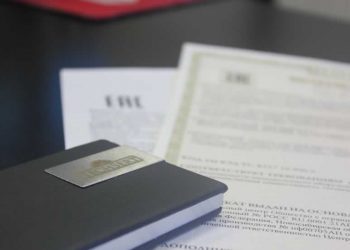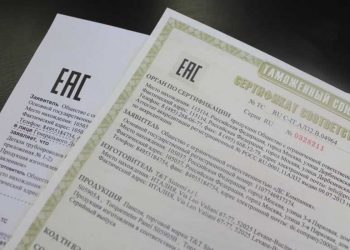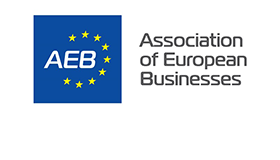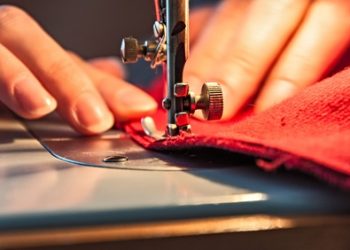Certification EAC of Cosmetics in Russia: A Comprehensive Overview
The certification EAC of cosmetics in the Russian Federation is a mandatory procedure designed to ensure that all perfumery and cosmetic products circulating within the country meet stringent safety standards. This process is governed by the technical regulations of the Customs Union, specifically TR CU 009/2011 “On the safety of perfumery and cosmetic products.” While mandatory certification has been replaced by mandatory declaration of conformity for all types of cosmetics, the underlying principle of verifying product safety remains paramount.
Mandatory Declaration of Conformity: The Core Requirement
The primary mechanism for ensuring the safety of cosmetics in Russia is the mandatory declaration of conformity. This requires manufacturers and importers to formally declare that their products comply with the requirements outlined in TR CU 009/2011. This declaration is a legally binding document that signifies the product’s adherence to established safety norms.
Voluntary Certification: An Additional Layer of Assurance
While the EAC declaration is mandatory, manufacturers and importers have the option to pursue voluntary certification. This additional step can provide further assurance to consumers and enhance the product’s market credibility. However, it is crucial to understand that obtaining a voluntary certificate does not negate the obligation to obtain the mandatory EAC declaration. Both serve distinct purposes in the regulatory framework.
Eligibility for Declaration of Conformity
The legal framework stipulates that only individual entrepreneurs or legal entities officially registered within the Russian Federation are eligible to obtain a declaration of conformity and a corresponding quality certificate. This restriction means that individuals and self-employed citizens are not permitted to register these declarations directly. This requirement ensures accountability and traceability within the Russian regulatory system.
The Step-by-Step Process of Declaring Conformity
Assuming the applicant possesses the necessary registration documentation, the process of declaring the conformity of cosmetics involves a structured, two-stage procedure that must be followed sequentially:
Stage 1: Mandatory Laboratory Testing
The initial and critical stage involves comprehensive laboratory testing of the cosmetic products. These tests are conducted by accredited laboratories and are designed to assess various safety parameters. It is only upon the successful completion of these tests and the issuance of official test reports that the declaration of conformity can proceed to the next stage.
Stage 2: Registration of the Declaration of Conformity
Following the receipt of satisfactory test reports, the applicant can then proceed to register the declaration of conformity with the relevant authorized body. This registration formally acknowledges that the products have undergone the necessary testing and comply with the safety requirements of TR CU 009/2011.
Key Parameters for Cosmetic Product Testing
To ensure comprehensive safety evaluation, perfumes and cosmetics undergo rigorous testing across several key parameters:
- Physicochemical Indicators: These tests assess the physical and chemical properties of the product, ensuring they meet specified standards for composition, stability, and other relevant characteristics.
- Microbiology: Microbiological testing is crucial to determine the presence and levels of microorganisms in the product, ensuring it is free from harmful bacteria, fungi, and other contaminants that could pose a health risk to consumers.
- Toxicological Studies: These studies evaluate the potential for the product to cause adverse health effects through various routes of exposure. They assess the safety of the ingredients and the finished product.
- Clinical Trials: In some cases, particularly for certain types of cosmetic products, clinical trials involving human volunteers may be required to assess the product’s safety and efficacy under normal conditions of use.
Essential Documentation and Product Samples
To initiate the declaration of conformity process, the applicant must provide the authorized certification body with a specific set of documents and samples of the cosmetic products intended for certification.
Documentation Requirements for Cosmetics of Own Production:
For cosmetic products manufactured within Russia, the following documentation is typically required:
- Completed Application: A formal application for certification, providing detailed information about the applicant and the products.
- Copies of TIN and OGRN Certificates: Copies of the Taxpayer Identification Number (TIN) and the Main State Registration Number (OGRN) certificates, confirming the applicant’s legal registration in Russia.
- Company Details Card: A document containing comprehensive details of the applicant company, including its legal address, contact information, and bank details.
- Product Description: A detailed description of the cosmetic product, including its full composition (ingredients), intended area of application (e.g., skin care, hair care), and method of use.
- TU (Technical Conditions) – if applicable: If the product is manufactured according to specific technical conditions (TU) developed by the manufacturer, a copy of this document must be provided.
The Role of Technical Conditions (TU)
Technical Conditions (TU) are regulatory documents developed by the manufacturer when there is no existing national standard (GOST) in Russia that applies to a specific cosmetic product. The TU outlines the specific requirements, specifications, and testing methods for that particular product. Determining the necessity of developing TU can be complex, and it is advisable to consult with certification specialists for guidance.
Development of Technical Conditions and Safety Data Sheets
In situations where a relevant GOST does not exist for a cosmetic product, our certification center offers services for the development of Technical Conditions (TU) and Safety Data Sheets (SDS). These documents are essential for ensuring product quality, safety, and regulatory compliance. The development of TU involves defining specific product parameters, quality control procedures, and testing methods. Safety Data Sheets provide comprehensive information about the product’s hazards, handling precautions, and emergency procedures.
In conclusion, the certification and declaration of conformity process for cosmetics in Russia is a multi-faceted system designed to protect consumer health and safety. Understanding the mandatory requirements, the step-by-step procedure, the necessary documentation, and the role of technical regulations is crucial for manufacturers and importers seeking to place their cosmetic products on the Russian market. Consulting with experienced certification bodies can streamline this process and ensure compliance with all applicable regulations.
Elaboration on Cosmetic Certification in RussiaNumber of Declarations Required
In Russia and the Eurasian Economic Union (EAEU), the certification of cosmetic products necessitates a declaration of conformity for each distinct category of cosmetics. The classification of these categories aligns with the Harmonized System (HS) codes. Consequently, each group identified by a specific HS code requires a separate declaration.
Consider a scenario where a company manufactures or imports both creams and soaps. Despite being under the broader umbrella of cosmetics, creams and soaps fall under different HS code classifications. Therefore, one declaration of conformity would be required to cover all the various types of creams, while another separate declaration would be necessary for all the different types of soaps. This principle extends to the entire product range; each HS code-defined category necessitates its own declaration.
Interestingly, the sheer volume of individual, yet homogeneous, cosmetic products within a declared category does not influence the base cost of either the declaration of conformity or any voluntary certification pursued. For instance, whether a company offers five or fifty different variations of hand cream, as long as they fall under the same HS code classification for creams, only one declaration is required. However, a wider range of products within a category may necessitate a greater number of research protocols to adequately assess their safety and conformity. This increase in testing requirements, driven by variations in formulations or intended use, does not translate into a need for additional declarations or certificates but rather impacts the scope and cost of the necessary laboratory testing.
To obtain an accurate preliminary estimate for the declaration process, it is essential to provide a comprehensive list of all cosmetic products intended for certification. This list should include the detailed composition of each product. This information can be submitted to certification experts in a free format, without the need for a formal application at this initial stage. Upon submission, a dedicated personal manager will be assigned to handle the request and provide a prompt assessment, typically within a few minutes. This preliminary consultation allows businesses to understand the scope of certification required and the potential associated costs.Necessity of Hygienic Certification
The landscape of cosmetic product assessment in Russia has evolved over time. Currently, mandatory hygienic certification, involving sanitary and epidemiological conclusions (certificates), is not a prerequisite for placing cosmetics on the market. This requirement was officially abolished in 2010 by the Decision No. 299 of the Customs Union Commission, dated May 28, 2010.
However, it is crucial to recognize that certain categories of cosmetic products remain subject to mandatory state registration with Rospotrebnadzor, the Federal Service for Surveillance on Consumer Rights Protection and Human Wellbeing. For these specific goods, a State Registration Certificate (SGR) and an accompanying expert opinion from an accredited body are mandatory. Only after successfully obtaining these preliminary documents can a company proceed with the declaration of conformity procedure for these registered products. Therefore, while general hygienic certification is no longer in force, a more stringent state registration process applies to specific high-risk cosmetic categories.Products Subject to State Registration
The following categories of cosmetic products are currently subject to mandatory state registration with Rospotrebnadzor:
- Skin lightening cosmetics: Products specifically formulated to reduce skin pigmentation.
- Cosmetics intended for artificial tanning: Products designed to impart an artificial tan to the skin.
- Intimate cosmetics: Products intended for use in the intimate hygiene area.
- Components for tattooing: Substances used in the process of tattooing.
- Cosmetics for individual protection of human skin from the effects of harmful production factors: Products designed to protect the skin against specific occupational hazards.
- Children’s cosmetics: All cosmetic products specifically formulated for use on children.
- Preparations for chemical lightening, coloring, and highlighting of hair: Products used to alter the color of hair through chemical processes.
- Products for chemical curling and straightening of hair: Products used to permanently change the texture of hair through chemical processes.
- Peelings: Cosmetic products designed to exfoliate the skin through chemical or physical means, typically involving a significant removal of the epidermis.
- Products manufactured using nanomaterials: Cosmetics where ingredients have been intentionally engineered at the nanoscale.
- Depilatory cosmetics: Products designed to remove unwanted body hair.
- Fluoride-containing oral hygiene products with a mass fraction of fluorides exceeding 0.15% (solid) or 0.05% (liquid): Toothpastes and mouthwashes with higher concentrations of fluoride.
- Teeth whitening products containing hydrogen peroxide or other components that release hydrogen peroxide: Products designed to bleach or whiten the teeth using peroxide-based agents.
Businesses dealing with any of these product categories must navigate the state registration process with Rospotrebnadzor before they can proceed with the declaration of conformity and subsequent market entry.Cost of Cosmetics Certification
The fundamental cost associated with obtaining a declaration of conformity for cosmetic products is approximately 24,500 rubles. This standard price typically covers the issuance of the declaration itself and the provision of a test report from an accredited laboratory, conducted under the 3D scheme of conformity assessment. The declaration of conformity, once issued, has a standard validity period of five years from the date of registration. The typical timeframe for completing the registration process for a declaration of conformity is around 14 days from the submission of all necessary documentation and successful testing.
It is important to note that the base cost provided is an indicative figure. To obtain a precise and accurate calculation for the certification of a specific range of cosmetic products, it is necessary to submit a detailed list of all products intended for declaration via email to the certification body. This detailed list allows for a comprehensive assessment of the testing requirements and any potential complexities that might influence the final cost.Rules for Labeling Cosmetic ProductsMandatory Labeling Requirements
Upon successful completion of the quality certification process, which culminates in the registration of a declaration of conformity within the EAEU framework, companies acquire the right to market and sell their cosmetic products within the territories of all Customs Union member states. The presence of a registered declaration (EAEU) also grants the manufacturer the permission to affix the EAC (Eurasian Conformity) mark on their products. This mark signifies that the products have undergone and passed the necessary conformity assessment procedures and comply with the relevant technical regulations of the EAEU.
However, alongside obtaining the declaration and applying the EAC mark, it is paramount to adhere strictly to the established rules for mandatory labeling when declaring and registering cosmetic products, particularly within the “Honest Sign” (Chestny Znak) system. This national traceability system is being progressively implemented for various product categories in Russia. Notably, starting from 2025, mandatory registration within the Honest Sign system will be introduced for a significant portion of perfumery and cosmetic products. This system aims to combat counterfeiting and illicit trade by providing consumers with a means to verify the authenticity and origin of products.
The product label, in strict accordance with the safety regulations outlined in the Technical Regulation of the Customs Union TR CU 009/2011 “On the safety of perfume and cosmetic products,” must prominently display an image of the EAC mark. Additionally, the label must clearly and legibly provide the following essential information to the consumer:
- Name of the product, including the brand (trade name): The specific name under which the cosmetic product is marketed, along with its brand or trademark.
- Information about the manufacturer: For imported products, the label must include the full name and legal address of the manufacturing company, as well as similar information for the importing company responsible for placing the product on the EAEU market. For products manufactured within Russia, the name and legal address of the Russian manufacturer must be indicated.
- Product composition, indicating the ingredients: A comprehensive list of all ingredients present in the cosmetic formulation, typically listed in descending order of weight or volume at the time of manufacture, using the International Nomenclature of Cosmetic Ingredients (INCI) where applicable.
- Instructions for use: Clear and concise directions on how to properly and safely use the cosmetic product to achieve its intended purpose.
- Information on operation and precautions: Any necessary warnings, contraindications, or precautions that consumers should be aware of when using the product to ensure safe application and avoid potential adverse effects.
- Expiry date and storage conditions: The date until which the product remains safe and effective under specified storage conditions. The label should also provide clear instructions on how the product should be stored to maintain its quality until the expiry date.
- Date of manufacture: The specific date or month and year when the cosmetic product was manufactured.
Failure to comply with these mandatory labeling requirements can result in penalties and the withdrawal of products from the market. Therefore, meticulous attention to detail in the labeling process is crucial for ensuring regulatory compliance and facilitating the smooth sale of cosmetic products within the EAEU.
For any inquiries or clarifications regarding the detailed procedures for declaring and certifying cosmetic products in Russia, including the latest updates on the Honest Sign system and specific labeling requirements, businesses are encouraged to seek a free consultation from qualified experts. This can typically be done through a feedback form available on the certification body’s website or by contacting them directly via telephone. Experienced consultants can provide comprehensive answers to all questions and assist in selecting the most suitable and efficient cooperation scheme for a company’s specific needs and product range.
TechSert Group, thanks to its team of high qualify professionals, helps companies in more than 70 countries to prepare all the necessary documentation and procedures to attain Gost and EAC certifications. Furthermore it can rely on its in-house certification body to assure tje highest level of quality at every step of the certification process.























